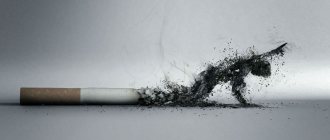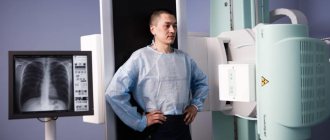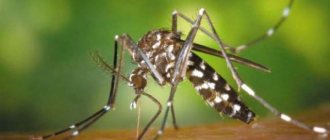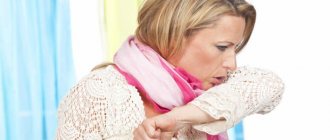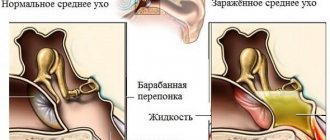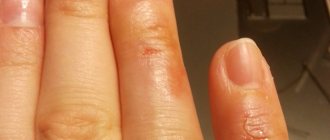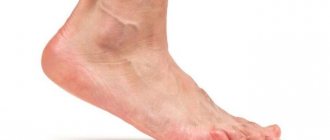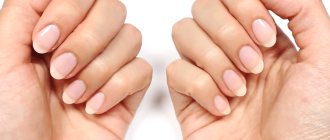What it is? ↑
Osteoarthritis of the foot is a degenerative joint disease.
It manifests itself as inflammatory processes in soft tissues and has a destructive effect on cartilage tissue.
This disease is accompanied by metabolic and blood circulation disorders.
This disease is associated with premature wear of intra-articular cartilage.
The most commonly affected areas are the knee, hip and foot areas.
What is the difference between arthrosis and arthritis?
Both arthritis and arthrosis are ailments that affect human joints, resulting in significant deterioration in the patient's lifestyle. Despite the similarity of names, these two diseases have fundamental differences.
Arthrosis is a pathology of articular cartilage and adjacent bone tissue, leading to systematic degeneration of the joint under the influence of working physical loads. The disease is predominantly characteristic of the older generation. Among the many reasons for the progression of osteoarthritis are traumatic lesions and excessive physical activity that occurred before the onset of the degenerative process.
Arthrosis cannot be called inflammation. However, today many experts claim that the inflammatory process is one of the factors in the appearance and progression of arthrosis. The joint and surrounding tissues are rebuilt over time due to the presence of loads that they are no longer able to withstand. This deviation develops very slowly.
Arthritis is an inflammatory process in a joint. During the development of pathology, destruction of articular cartilage occurs under the influence of inflammatory agents and the immune system. This disease is common among the most productive and young people.
Most often, arthritis progresses due to autoimmune factors, which consists of damage to the body’s own tissues by the immune system. This occurs as a result of genetic pathologies or infectious lesions.
Infection plays a key role in the occurrence of arthritis, since under the influence of bacteria, whose antigens are similar to human proteins, antibodies are synthesized that attack their own tissues. Usually, not only the joints are negatively affected, but also the heart and kidneys. That is why it is necessary to treat or get rid of tonsils with constantly recurring tonsillitis in order to prevent further complications on the heart and other organs.
Unlike arthrosis of the foot, arthritis has an acute course with pronounced clinical manifestations. Patients experience fever, local tissue swelling, severe pain at the site of illness and other associated symptoms.
The scenario for further development depends on the type of arthritis. Mostly, after an acute start, the disease stops, but the acquired anatomical changes in the joints remain, increasing the likelihood of further progression of osteoarthritis. Sometimes there are relapses of the acute phase with pain in the joints, fever, etc.
Since osteoarthritis is an inflammatory disease, it can be controlled by taking anti-inflammatory medications. Osteoarthritis is quite difficult to cure, since it consists of chronic, gradually progressive destructive changes in the joints.
Characteristic signs and symptoms ↑
The clinical picture of symptoms may vary.
It depends on the degree of inflammatory-destructive processes and the stage of the disease.
The symptoms are similar to those of arthritis. Therefore, you need to know the common signs of foot disease so that you can take the right steps.
These include:
- During the movement of the joints, a kind of crunching occurs due to the appearance of irregularities on the articular surfaces.
- During physical training, pain attacks occur that do not bother you at rest.
- In the morning, after sleep ends, the victim may feel stiffness in movements.
- There is deformation of the joints, which occurs gradually.
- Gait is disturbed.
- The skin of the affected joint swells, swells, and characteristic redness appears on it.
- Body temperature may increase
- Performance decreases, fatigue increases
- Specific calluses may form on the feet
- In the later (advanced) stages of the disease, characteristic compactions and small nodules may appear on the foot, which will tend outward.
big toe
Osteoarthritis of the big toe is popularly referred to as “bunions.”
Common symptoms include:
- joint stiffness;
- redness in the area of the damaged joint;
- joint swelling;
- joint deformation.
Photo: arthrosis of the foot in the picture
The disease often occurs due to longitudinal or transverse flatfoot and is progressive.
Small joints of the foot
Osteoarthritis of the small joints of the foot affects the joints of the feet and hands.
Main symptoms:
- Dense nodules (Heberden's nodes) appear in the area of the fingers;
- the skin around the nodules may turn red;
- gradual painless deformation of the joints occurs.
The most dangerous sign is damage to the joints of the first fingers.
This can lead to finger stiffness and curling.
Metatarsals
Arthrosis of the metatarsal bones can affect any joint.
The disease is accompanied by:
- painful attacks;
- partial or complete loss of mobility.
Phalanges of fingers
Arthrosis of the phalanges of the fingers is a common problem of our time.
The disease can affect men and women equally.
As a rule, it affects not one, but several joints (interphalangeal and spot-phalangeal joints at the same time).
Arthrosis of the phalanges of the fingers is characterized by:
- mechanical rhythmic pain;
- the occurrence of pain when putting pressure on the arms;
- increased pain during inflammatory processes.
Midfoot
Patients with arthrosis of the midfoot complain of certain symptoms of varying intensity:
- pain syndromes in the affected joint;
- swelling and deformation of the joint;
- difficulty gait.
Do you suffer from gout? On our website you will find a lot of information on how to treat gout on the legs with folk remedies. How to treat salt deposits in joints? Find out in this article.
Characteristics of the disease
Bone joints contain interarticular fluid, which softens friction. External and internal negative factors lead to changes in the consistency of the liquid. It becomes thick and eventually dries out completely. Because of this, the cartilage tissue begins to wear off and the connection is damaged.
Negative factors that provoke the development of diseases of the joints of the foot:
- Age-related changes in the body.
- Injury to joints: fracture of the big toe, injury to small joints of the foot, falls from a great height.
- Constant load on connections.
- Deficiency of nutrients in the body.
- Diseases that cause changes in the body: diabetes, diseases of the gastrointestinal tract, kidney and liver diseases.
- Exposure of an extremity to extremely low temperatures.
- Hereditary predisposition.
- Excess weight, which increases the load on the bone joint.
The main reason that provokes the development of deforming arthrosis of the foot in a woman is uncomfortable shoes and frequent wearing of high-heeled shoes.
Disease of the joints of the foot does not make itself felt in the early stages, since its symptoms practically do not appear. The characteristics of the signs of arthrosis of the foot depend on the stage of the inflammatory process and on the affected area: big toe, inflammation of the small joints of the foot, damage to the midfoot.
The main signs of deforming osteoarthritis are the following:
- Crunching and creaking of the joint during movement.
- Inflammation and redness of the skin around the big toe or other area.
- Swelling of the big toe, midfoot.
- Increased body temperature.
- Lumps and nodules appear on the foot, mainly around the big toe.
- Stiffness of the joint, limited movement.
- Articulation deformation.
- Change in gait.
- Pain, which is mainly felt when the disease has developed to stages 2 and 3.
- Increased fatigue.
In the early stages, signs of the disease practically do not appear, only pain is occasionally felt.
You can only find out about the disease in its early stages by conducting a medical examination. In order to begin treating foot arthrosis in the early stages, you need to do an X-ray and computed tomography scan of the foot, big toe and small joints of the foot.
The people were taken aback! Joints will recover in 3 days! Attach...
Few people know, but this is exactly what heals joints in 7 days!
Reasons ↑
Degenerative joint changes can be influenced by several factors, which are often caused by the modern rhythm of life or impaired blood supply to the affected organ.
The most common causes of foot arthrosis:
- Improper formation of foot joints;
- Flat feet, shortened size of one limb;
- Incorrect formation of the shape of the legs;
- Deformation of the toes;
- Curvature of the big toe;
- Formation of hammer-shaped fingers;
- Overload of large (medium) mobile joints;
- Injuries, sprains and bruises on the cartilage;
- Hypothermia or freezing of the foot;
- Violation of the metabolic process;
- Chronic inflammation;
- Presence of diseases of the endocrine system;
- Degenerative changes.
Sometimes arthrosis of the foot occurs due to biomechanical disturbances in the movement of the foot.
Fig.: types of flat feet
The high size of the arch is caused by rigidity and joint immobility, as a result of which the articular bones are pressed tightly against each other, and arthrosis of the foot can develop.
Physiotherapeutic procedures for illness
A combined treatment approach works much better than just using medications and following a healthy lifestyle. Your doctor may suggest physical therapy treatments. After reading the patient's medical history and examining the degree of joint destruction, the physical therapist may recommend the following courses of treatment:
- infrared laser therapy;
- ultrasound treatment;
- low-intensity UHF therapy;
- a new way to cure arthrosis of the foot - high-frequency magnetic therapy;
- SUV irradiation.
Physiotherapy will help if arthrosis of the foot has not reached the third stage of development. Courses of treatment with physiotherapy are not recommended if there is an inflammatory process in the joints.
There should be no inflammatory phenomena; doctors do not guarantee high-quality treatment and the absence of complications if they exist.
Risk factors ↑
Risk factors include:
- genetic predisposition;
- bad lifestyle;
- poor nutrition;
- sudden refusal from sports training, when muscles become weak and joints become loose;
- professional passion for certain sports (dancing, ballet, boxing);
- use of narrow, constrictive shoes or high-heeled shoes;
- high growth, and, as a result, overloads in places of support.
Additional causes of the disease
Often, arthrosis of the foot develops during pregnancy, as a result of weight gain, swelling of the legs and inflammation of the joints.
In children, foot problems can appear at an early age when they are learning to take their first steps.
The child's legs experience a lot of stress when trying to take a step. As a result, deformation and curvature of the ankle joint may occur.
With flat feet, curvature of the spine can occur.
Photo: hallux valgus in a child
Flat-valgus feet in children and adolescents are the main cause of the development of foot arthrosis in the future.
Recommendations
Slowly progressing arthrosis of the foot requires complex treatment, since this is a labor-intensive process and involves a comprehensive impact on the diseased joints. At home, a person will not be able to undergo qualified therapy, so a set of therapeutic measures must be prescribed by a doctor after an appropriate examination. Diagnosis of the disease involves magnetic resonance imaging, computed tomography, and x-ray examination.
The priority in treatment is medication, physiotherapy, and physical therapy. To increase the effectiveness of therapy at home, you can use folk remedies that act more slowly, but, unlike tablets, do not have side effects. This course of procedures will take longer. But any type of therapy must be agreed with a doctor.
Nutrition control and dieting
One of the causes of arthrosis of the toes is excess weight, but diet is not a panacea for the disease. A balanced diet reduces body weight, easing the patient's condition. But ridding the body of extra pounds should not deprive the patient of essential minerals, vitamins, proteins, fats and carbohydrates supplied with food. To quickly get rid of the symptoms of the disease, you need to eat taking into account the following recommendations:
- The products from which the dishes are prepared must not contain chemical additives.
- Food should be steamed, boiled, baked or stewed.
- Serve meals in small plates to prevent overeating.
- Eat small and often.
- The last meal should end three hours before bedtime.
- Avoid fried foods, salt, pepper, and hot seasonings.
- Give preference to lean meats and fatty fish, which provide the body with beneficial Omega-3 polyunsaturated acids that help prevent inflammatory processes.
- To saturate the body with calcium, you need to include milk, kefir, whey, fermented baked milk, natural yoghurts, lettuce, spinach, celery, dill, and parsley in your daily diet.
- To get enough vitamin E, you need to eat hazelnuts, walnuts, almonds, pine nuts, and wheat germ.
- The main sources of carbohydrates necessary for the body are wholemeal bread and porridge.
- To saturate the body with vitamins, it is advisable to consume fresh vegetables more often, among which carrots, zucchini, broccoli, and pumpkin are of great value.
- Replace baked goods and sweet dishes with fruits or fruit juices.
Massage and gymnastics
For arthrosis, massage and physical exercises for the foot are an effective method of preventing the disease and an important component in its complex treatment. Regular massage sessions and a set of special exercises performed at home will give your joints a second life, and you will forget about the inconvenience and pain. Morning exercises for the feet should be done slowly and carefully, and it is better to start with simple exercises, for example:
- Sit on a chair with your shoulders back as far as possible. With your feet shoulder-width apart, lift your toes off the floor one at a time and leave the heels of your feet on the floor.
- The starting position is the same, just lift your heels off the floor and leave your toes motionless.
- Take steps while lying in bed on your back: with straight legs, “step” three times forward and three times back.
The gymnastics you do at home should not cause joint pain. If some exercise is painful, this method of treatment is not suitable. After unsuccessful movements, you need to massage the sore spot using an ointment made from hop cones, which will quickly relieve pain. Watch the video to see how a professional foot massage is done:
Medicines for pain relief and inflammation
Drug therapy for foot arthrosis includes the use of drugs from various groups, each of which performs a separate task:
- Nonsteroidal anti-inflammatory drugs (NSAIDs), which relieve pain and prevent the development of inflammation. They do not treat arthrosis; their main purpose is to alleviate the disease. Popular NSAIDs include: Ibuprofen, Ortofen, Menovazin ointment.
- Analgesics that are used in the second stage of the disease, when the patient experiences severe pain. To quickly block painful sensations, doctors prescribe drugs: “Apizatron”, “Viprosal”, “Nicoflex”.
- Chondroprotectors, with the help of which damaged cartilage tissue is restored. They contain substances that make up articular cartilage. But these drugs are effective only at the first stage of the disease. They are taken in long courses, and the first positive results appear only after 3-4 months of treatment. The most effective chondroprotectors: “Arthra”, “Structum”, “Dona”.
- Vitamins and minerals that enhance immunity help the body to recover on its own, normalizing metabolic processes. Effective vitamin and mineral preparations include: “Vitrum”, “Bishofite”, “Oligovit”.
Wearing special shoes
In the complex treatment of arthrosis of the foot, doctors prescribe constant wearing of special shoes. It is now easy to find orthopedic boots, shoes and even slippers for use at home. Specially designed arch supports and insoles support the foot in the desired position and add shock absorption when walking, while braces and additional inserts secure the ankle, preventing further deformation of the articular cartilage and the development of arthrosis of the toes.
Degrees of disease ↑
There are several stages of the disease.
- 1st degree - initial stage. The patient experiences minor pain in the foot area. During physical activity, the patient complains of fatigue.
- 2nd degree. Painful sensations intensify and become more pronounced. Joint movements are limited. Indurations and thickenings may appear on the surface of the damaged joint.
- 3rd degree. The patient has significant deformities of the foot. Motor reflexes acquire a limited form or complete immobility.
Photo: degrees of arthrosis of the foot
Classification
The disease can affect the metatarsophalangeal joint.
With arthrosis and osteoarthritis, damage occurs to the left or right foot; less often, a deformation process is observed in both legs. The disease is usually divided into several types, taking into account localization. The pathology affects:
- subtalar joint;
- calcaneocuboid joint;
- metatarsocuneiform area;
- metatarsophalangeal joint;
- toes on the foot.
Also, deforming arthrosis of the foot can be divided into 3 types, taking into account the causes of occurrence:
- Primary. Progresses against the background of injury or inflammatory reaction in the foot.
- Secondary. Associated with other diseases that are not directly related to the foot. Thus, arthrosis occurs due to hormonal imbalance or the influence of other factors.
- Polyarthrosis. Characterized by damage to several joints on the foot.
Before treating the disease, it is important to take into account the stage of the lesion. The first degree, as a rule, does not manifest itself with any symptoms and is not detected for a long time. The table shows the stages of foot arthrosis:
| Degree | Character traits |
| I | Fatigue of the feet |
| Attacks of pain after a long walk | |
| II | Increasing pain and becoming permanent |
| Lumps on the knuckles | |
| Calluses in the heel area | |
| III | Significant deformation of the foot leading to lameness when walking |
| Limited mobility | |
| X-ray shows no joint spaces or severely narrowed joints |
Possible consequences ↑
Osteoarthritis of the foot primarily affects the cartilage of the joints, which directly protect the bones.
Because of this, cartilage becomes inelastic, gradually begins to collapse and does not absorb external shocks, causing the surface of the bones to experience increased stress.
Overloading the bones of the foot leads to disturbances in blood microcirculation and the appearance of bone and cartilaginous growths.
The disease is aggravated by deformation of the fingers and their fixation in a crooked position - such a deviation is difficult to treat in the future.
Osteoarthritis of the foot can cause more serious diseases:
- arthritis of the foot;
- foot bursitis;
- inflammatory processes in the periarticular bursa.
An advanced and severe form of the disease leads to immobility of the foot, which is difficult to treat.
Sometimes the disease becomes irreversible, and the patient is given a disability.
Exercise therapy against arthrosis of the foot
Exercise therapy (physical therapy) is widely used for osteoarthritis. Experts warn that you should not perform exercises to treat arthrosis of the foot if the symptoms have worsened and there is an active inflammatory process.
It is necessary to perform the exercises correctly (you can use photos and reviews on the Internet to understand how to do them). Exercise therapy exercises consist of flexion and extension movements. They are aimed at uniformly distributing the load in the ligaments and muscles of the body.
Treatment of foot arthrosis, with symptoms at the initial stage, is successfully carried out through courses of laser therapy.
Doctors strongly recommend listening to the basic rules when performing exercises:
- Avoid fast or sudden movements;
- Take short breaks between exercises;
- Gymnastics should not hurt;
- When exercising, you need to breathe deeply and regularly;
- Clothes and shoes for training should be comfortable and light.
Exercise No. 1
Lie down on the floor. Bend your legs at the knees. Lift up on your toes. Repeat the exercise 15-20 times.
Exercise No. 2
Take a small, spiked rubber ball. Press the ball with your foot. Rotate your foot in a circle for 1-2 minutes. Repeat the exercise with the other leg.
Exercise #3
Lying on the floor, stretch your legs. Bend your right leg and press it to your body with your hands. Hold this for 5 seconds. Repeat the exercise with your left leg. The complex should be performed slowly for 1-2 minutes.
Exercise No. 4
Lying on your stomach, bend your leg and reach your buttock with your heel. Repeat the exercise several times, alternately with one and the other leg.
You can add other foot exercises as well.
Exercise #5
Lying on your back, rotate your legs, imitating riding a bicycle. Do the exercise for 1 minute.
Exercise #6
Lying on your back, raise your leg up perpendicular to your body for 3 seconds, keeping your toes at right angles. Repeat the exercise several times.
Diagnostic methods ↑
An experienced doctor, during the initial examination of the patient, can discern the symptoms of foot deformation and identify restrictions in the movements of the joints.
First, the doctor establishes the true cause of the disease in order to exclude the possibility of other diseases.
Certain research methods are used for diagnosis:
- Laboratory research. They allow you to examine blood, establish an accurate diagnosis and identify the true causes of the disease.
- Radiography. It is the main method that allows you to establish progressive arthrosis of the foot. X-rays make it possible to see changes in cartilage tissue and narrowing of the gaps in the joints.
- Arthroscopy. Allows you to confirm the presence of the disease. This method is used to assess the internal condition of joints.
Treatment of foot arthrosis
In order for osteoarthritis not to develop, and pain to be absent or minimal, treatment must be approached with the utmost seriousness. Treatment should be carried out in several directions at once - using medications, orthopedic, physiotherapeutic and other available methods.
Medication
In the treatment of arthrosis, medications of different groups are used. Each group copes with a specific task.
The main ones are the following:
- Painkillers. They are often used in treatment. They help cope with the painful symptoms of arthrosis of the foot (photos and patient reviews confirm this). These include paracetamol, diclofenac, indomethacin, etc. These drugs do an excellent job of relieving pain, but have a significant drawback: there is a risk of damaging the gastric mucosa;
- Chondroprotectors . Drugs that improve the condition of cartilage, restore metabolic processes and improve blood supply to the joints. This group of medications includes Chondroitin sulfate, Structrum, Hyaluronic acid;
- Drugs that stop the progression of the disease. For example, drugs Artra, Diacerein.
How to treat? ↑
When choosing treatment for foot arthrosis, the stage of the disease is taken into account.
The main goal of treatment is to provide conditions for normal walking.
Among the treatment methods used are the following:
Gymnastics
The earlier the diagnosis is made, the faster and more effective the treatment process is.
Exercises must be properly selected, then they will help eliminate the disease and become an excellent prevention of the occurrence of the disease in the future.
The exercises are aimed at:
- Achilles tendon stretch;
- stretching the toes (big toe);
- strengthening the toes;
- flexion of toes.
Video: gymnastics for feet
Treatment with folk remedies
Arthrosis can be cured using traditional medicine recipes.
The best effect will be achieved if folk remedies are used in combination with traditional ones.
Folk remedies include:
- Tincture of marsh cinquefoil. To prepare it, you need 100 g. Pour vodka (4 glasses) over the cinquefoil and place in a dark place. The solution must be infused for 3 weeks. After time, the tincture should be filtered and consumed three times a day before meals (1 tbsp.). Tincture of cinquefoil can be used to rub the injured foot or in the form of compresses. It is better to do such procedures before bedtime.
- Eucalyptus tincture. To prepare it you need to take 100 grams. crushed eucalyptus and fill it with vodka (1/2 liter). The solution should be left for 7 days in a dark place. Before going to bed, eucalyptus tincture should be rubbed into the sore foot.
- Mullein tincture. 50 gr. mullein flowers need to be filled with a 70% alcohol solution and vodka (200 g). The consistency should be infused for 10 days. Next, you can rub the affected joint with the tincture.
- Aloe leaf tincture. To prepare it, you need to take aloe leaves, wash them and grind them through a meat grinder. In 50 gr. Add honey (100 g) and vodka (150 g) to the resulting aloe juice. The composition must be infused in a dark place (at least 7 days) and then used in the form of compresses.
- Bee venom. Bee venom perfectly relieves pain syndromes, inflammatory processes and restores joint mobility. They should rub the areas affected by arthrosis.
Treatment at home
Nutrition for arthrosis of the foot should be complete.
This is the main condition from which treatment of the disease at home begins.
It is necessary to include calcium, vitamin E and B-vitamins in the diet.
They are found in almonds, sprouted wheat, breads, and pasta.
You can purchase these vitamins at the pharmacy in tablet form.
With this disease, it is recommended to consume less salt.
At home, you can make herbal baths for injured feet.
They will help relieve pain syndromes and relieve heaviness in the legs.
Baths made of honey and salt are very effective for arthrosis.
Bischofite baths are also very effective for arthrosis of the feet.
Bishofite is a storehouse of microelements, and therefore this remedy has a beneficial effect on the general muscular condition of the legs and helps heal the feet.
You can use bischofite compresses, which are best done before bed.
Clay treatment is effective for various forms of arthrosis.
Clay baths and rubbing help relieve pain and inflammation.
Clay cakes are applied to the affected foot and left for two hours.
After this, the feet are provided with warmth.
One of the common causes of foot pain is a heel spur. On our website you will find useful information about methods of treating heel spurs. What does diclofenac ointment help with? Find out here.
What is infectious arthritis? Read in this article.
Diet
The diet is aimed at eliminating the causes and factors that provoke inflammatory processes in the joints and destroy cartilage tissue.
The main enemy of joints is excess weight.
If you have arthrosis of the foot, it is recommended to avoid:
- cakes, pastries, sweets and other products that contain fast carbohydrates;
- alcoholic drinks, as they contain a large amount of carbohydrates.
It is necessary to consume more vegetables, fruits, dairy products rich in B2 - vitamin and calcium, and low-fat fish.
Before starting a diet, you should consult a doctor who can advise you on the optimal diet.
Massage
With this disease, there is a violation of blood microcirculation.
Massage therapy sessions can help restore this process.
The foot massage begins from the tips of the toes and continues along the back area to the ankle joints.
Movements when massaging the foot should be continuous.
The massage will be more effective if it is accompanied by rubbing and ends with a warming session using paraffin and ozokerite.
Video: how to properly massage your feet
Insoles
Orthopedic insoles are equipped with a certain relief, which has a therapeutic effect.
Such insoles are used for flat feet of various shapes, painful feet and diseases of the musculoskeletal system.
Fig.: Function of orthopedic insoles
Orthopedic insoles are recommended for use by patients who have flat feet or arthrosis of the feet.
They prevent future foot deformation and restore the shock-absorbing function of the foot.
Properly made insoles help cure arthrosis of the foot and relieve the victim from pain syndromes.
Surgery
Surgical treatment methods are used when medication and physiotherapeutic methods are ineffective.
There are several surgical treatment methods:
- Joint fusion. In this operation, the bones are fixed in the joint area using plates, screws or rods. When the joint heals, it remains motionless.
- Joint replacement. Here the ankle joint is replaced with artificial implants. But this type of operation is used in extremely rare cases.
Drugs
The main goal of drug treatment is to stop progressive inflammation in the joint and improve the cartilage layer.
Sometimes medications are injected into the area of the deteriorating joint.
In everyday practice, doctors often use certain vitamin preparations that help with foot arthrosis:
- Vitrum;
- Centrum;
- Berocca;
- Materna;
- Teravit.
Ointments
Anti-inflammatory, analgesic and warming ointments are suitable for treatment:
- Menovazin;
- Nicoflex;
- Apisatron;
- Viprosal;
- Ungapiven.
Physiotherapy
Physiotherapeutic procedures are aimed at warming up the affected foot.
The group of physiotherapeutic treatment methods includes:
- ultraviolet treatment;
- laser therapy;
- UHF therapy.
Ultraviolet light affects the affected area and reduces the sensitivity of the nerves.
As a result, the nerve fibers send fewer pain signals to the brain, and the patient begins to feel relief.
For foot treatment, the power of such irradiation is 5 biodoses, which increase slightly after a few days.
Laser therapy is effective in relieving inflammation in the affected foot.
Laser waves have a calming effect and eliminate pain.
The main course of laser therapy is 15 procedures.
UHF therapy increases blood circulation and prevents the formation of free-form radicals that are harmful to the joint.
Such procedures are carried out daily for 12 days.
Physiotherapeutic procedures such as magnetotherapy, electrophoresis, and phonoresis are successful.
Use of traditional medicine
It is possible to treat arthrosis at home and in some cases it is quite effective. The main thing is to consult your doctor before using any means. Here are some simple recipes:
Foot massage for arthrosis
How to treat arthrosis? Symptoms of the disease can be relieved by using various medications. At the first stage of treatment, the use of non-steroidal anti-inflammatory drugs is usually sufficient.
NSAIDs relieve pain and prevent the development of inflammation. These medications do not affect the cause of the pathology, they only relieve symptoms.
This group of medications includes Ibuprofen, Advil, Motrin, and Ortofen. NSAID ointments are used externally.
They relieve swelling and pain. You can buy Menovazin or Diclofenac.
Intra-articular cartilage can be restored using chondroprotectors. Destroyed tissue is restored only if the cartilage has not yet been completely erased.
They are mainly effective at the first stage of development of arthrosis of the foot. Chondroprotectors will not correct further damage; only surgery will help.
Popular and effective chondroprotectors include the drug “Dona”, “Arthra”, “Structum”. They are always on sale and available to every patient.
The mechanism of action of chondroprotectors is to improve metabolic processes, as well as to delay the progression of degenerative pathology.
The main components of the drugs are chondroitin sulfate and glucosamine. Medicines reduce the activity of lysosomal effects, stimulate the activity of chondrocytes and the synthesis of hyaluronic acid, have an anabolic effect on cartilage tissue and reduce the expression of anti-inflammatory cytokines.
Prevention
To prevent the occurrence of an unpleasant disease, you must follow simple rules. One of them is a healthy lifestyle. To prevent arthrosis you need:
- organize proper nutrition;
- limit excessive physical activity;
- get rid of excess weight;
- reduce the amount of salt you eat;
- strengthen the immune system to eliminate inflammatory and infectious diseases.
Preventive methods for the development of arthrosis include:
- use of comfortable shoes with flexible soles and orthopedic insoles;
- exclusion of high heels;
- performing gymnastics for the joints of the foot;
- walking barefoot on grass, sand;
- avoiding lower limb injuries;
- avoiding hypothermia of the legs;
- self-massage of the sole;
- timely treatment of inflammatory diseases.
It is not enough to simply cure this disease. It is advisable to make sure that it does not become decisive and does not interfere with enjoying life. Therefore it is worth:
- wear comfortable, expensive leather shoes without heels;
- walk barefoot more often;
- do a foot massage;
- buy a foot massager;
- sanatorium-resort treatment is recommended;
- consume as many vitamins as possible;
- lead a correct lifestyle;
- consume more cottage cheese.
Gymnastics for arthrosis of the foot are prescribed by a doctor. It can be observed and remembered. The main elements are:
- Walking for 40-60 minutes;
- Health-improving physical education.
It is imperative to choose a type of load that will not only produce results, but will please the patient himself. Nothing needs to be done by force.
Start carefully, step by step.
It is worth remembering that any exercise through pain is not only contraindicated, but also not permissible.
Cure arthrosis of the foot is quite simple. It is worth adhering to a healthy lifestyle, walking barefoot more often, resting more, taking care of your legs and feet and not forgetting about positive thinking, diet, and exercise.
We must remember that thought is material. What you think is what you get.
It's worth thinking about good things.
loading…
To prevent foot arthrosis, you should take care of your shoes; they should fit you in size, have good shock absorption, and the soles should be flexible. You need to monitor your diet, as poor nutrition can lead to the deposition of salts in the joint, and also monitor your weight, since excess weight means additional stress on the joint.
It is also recommended to walk on the grass for prevention. In addition to all of the above, you should perform various exercises that are beneficial for your joints.
Arthrosis of the foot should not be advanced, since treatment in particularly advanced cases is impossible and in such cases arthrosis leads to complete immobility of the joint.
Ways to get rid of arthrosis in cases where treatment does not help is surgery. It consists of joint replacement surgery or joint fusion surgery.
